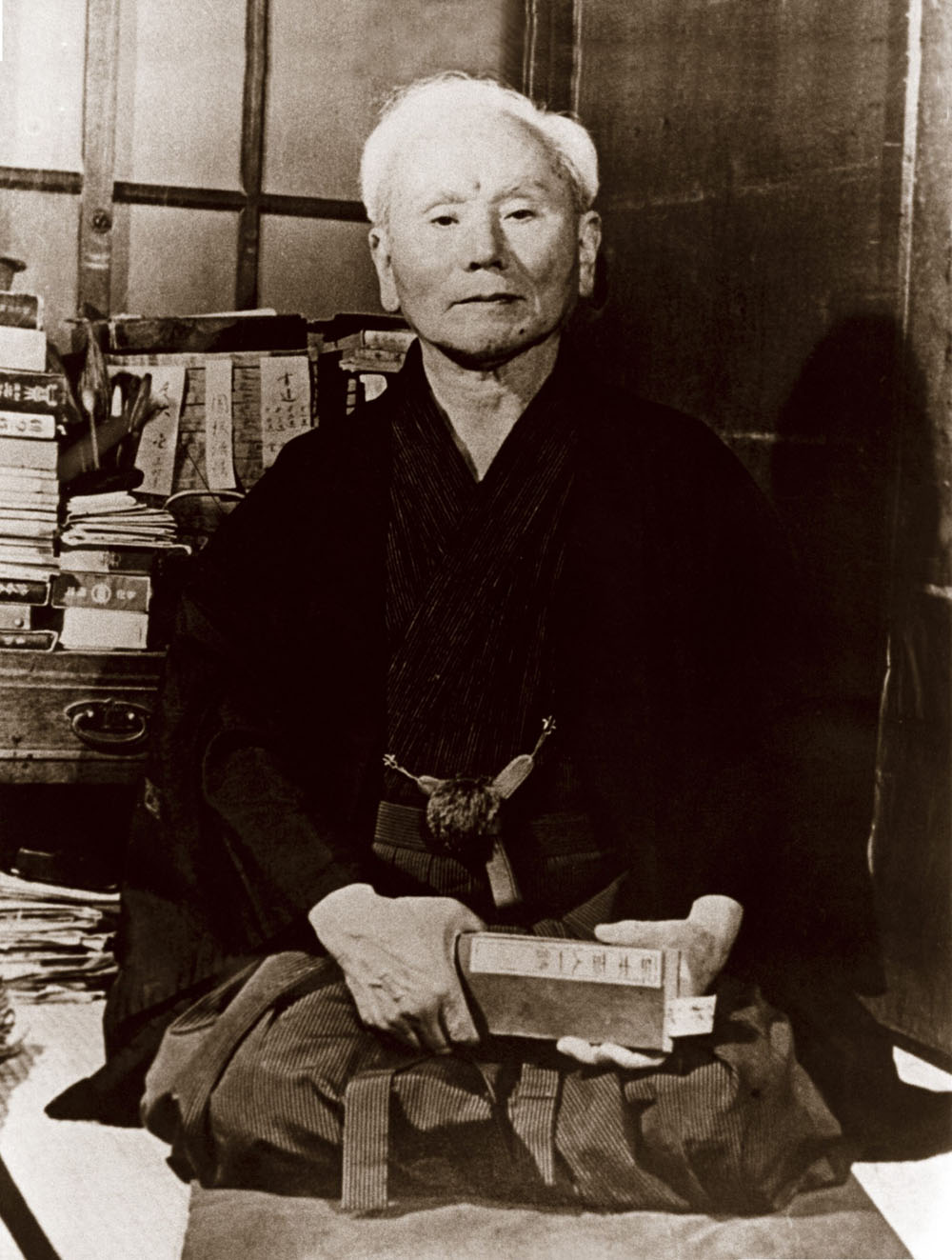Traditional Shotokan Karate
Karate (空手 'empty hand') is an ancient unarmed fighting system which is a combination of deadly techniques and a philosophy that avoids conflict when at all possible.
The ultimate aim of Karate as a martial art is not limited to only victory or defeat. It helps us to face all manner of challenges that life throws at us by improving our character through hard practice.
Karate is a systematic conditioning of hands and feet to turn them into powerful weapons which allows Karateka to put the enemy under control with one punch or kick.
 (© André Bertel / Jen Elliott - https://andrebertel.blogspot.com)
(© André Bertel / Jen Elliott - https://andrebertel.blogspot.com)
Shotokan is one of several traditional karate styles. It is often regarded as a 'hard' and 'external' martial art because it is taught that way to beginners and coloured belts to develop strong basic techniques and stances. Initially strength and power are demonstrated instead of slower, more flowing motions. Those who progress to higher levels end up developing a much more fluid free-style which often incorporates grappling and jujitsu-like techniques.
The Shotokan style we study was developed from various ancient Chinese martial arts by Master Gichin Funakoshi (1868–1957), an Okinawan teacher of physical education who introduced it to mainland Japan in 1922. Although it began as a single association that developed into the famous Japan Karate Association, Shotokan now exists as many different organisations. Some are large, international, mainstream organisations such as ours (Japan Karate Shoto Federation) with Headquarters in Japan and some are smaller lesser known independent organisations.
The Shotokan Karate practiced today has undergone decades of evolution and improvement by following methods developed in modern sports sciences. Shotokan Karate has now become a graceful, dynamic martial art that is both powerful and beautiful without compromising the traditional teachings of its founder, Gichin Funakoshi.

Our direct link to karate's past
The journey from Funakoshi Gichin to the modern-day Japan Karate Shotorenmei (JKS) involves a significant lineage within the Shotokan style, marked by the evolution and, at times, fragmentation of organisations dedicated to preserving and developing karate.
1. Gichin Funakoshi (1868-1957) - The "Father of Modern Karate"
Origins: Funakoshi Gichin, born in Okinawa, studied under prominent Okinawan masters like Yasutsune Azato (Shuri-te) and Yasutsune Itosu (Shuri-te/Naha-te). He is credited with introducing Okinawan karate to mainland Japan in the early 20th century.
Philosophy: Funakoshi emphasised karate-do as a means of character development and self-perfection, rather than solely a fighting art. He laid out the "Twenty Precepts of Karate" (Niju Kun) and focused on kata (forms) as the core of the art. He initially referred to his style simply as "Karate."
Shotokan Dojo: His first official dojo, built in 1936, was named Shotokan (meaning "Shoto's Hall," "Shoto" being Funakoshi's pen name). This is how the style eventually became known as Shotokan karate.
Key Students: Funakoshi taught many influential students who would go on to shape the future of Shotokan, including his son, Yoshitaka (Gigo) Funakoshi, Masatoshi Nakayama, Hidetaka Nishiyama, Hirokazu Kanazawa, and Tetsuhiko Asai, among others.
2. Yoshitaka Funakoshi (1906-1945) - The Innovator
Gichin Funakoshi's third son, Yoshitaka, was a highly gifted karateka who significantly developed Shotokan's technical aspects, especially its kicking techniques. He played a crucial role in introducing deeper stances and more dynamic movements, laying the groundwork for what would become the distinctive "JKA Shotokan" style. He also developed Kihon Kata like Taikyoku Shodan.
3. The Japan Karate Association (JKA) - The Standard Bearer
Formation (1949): After World War II, many of Funakoshi's senior students, including Masatoshi Nakayama and Hidetaka Nishiyama, formed the Japan Karate Association (JKA). Funakoshi himself served as honorary head.
Standardisation and Global Spread: Under Masatoshi Nakayama's leadership (who became Chief Instructor), the JKA formalised Funakoshi's teachings, standardised techniques, and established the renowned JKA Instructor Training Program. This program produced highly skilled instructors who were sent around the world, playing a monumental role in popularising Shotokan karate globally.
Sport vs. Tradition: While the JKA sought to standardise and spread karate, some of Funakoshi's earlier students formed groups like the Shotokai, which aimed to preserve Funakoshi's original, less sport-oriented teachings. The JKA, while maintaining traditional roots, embraced competition and developed a more dynamic, athletic style.
4. Tetsuhiko Asai (1935-2006) - A Divergent Path
JKA Instructor: Tetsuhiko Asai was a prominent and highly respected instructor within the JKA, known for his incredible technical skill and fluid movements. He was a senior director at the JKA and succeeded Nakayama as a leading instructor.
Legal Battle and JKS Formation: Following internal disagreements and a legal battle within the JKA after Nakayama's death in 1987, Tetsuhiko Asai Shihan left the main JKA organisation. In 1990, he established the Japan Karate Shotorenmei (JKS).
5. Japan Karate Shotorenmei (JKS) - Asai's Legacy
Founding Principles: The JKS was founded by Asai Shihan with the aim of preserving and developing traditional Shotokan karate, while also incorporating some of Asai's unique technical innovations, which often drew from Chinese martial arts. Asai Shihan was known for his vast knowledge of kata (controlling over 120, and creating many new ones) and his focus on diverse and acrobatic movements.
Current Leadership: Upon Tetsuhiko Asai's passing in 2006, the JKS was left under the leadership of Masao Kagawa Shihan, who remains the Chief Instructor today. Kagawa Shihan, also a highly accomplished and respected karateka, continues to guide the JKS in upholding its traditional Shotokan teachings while embracing a spirit of constant improvement and evolution.
Global Reach: The JKS has grown into a premier international organisation, with its headquarters in Tokyo and affiliations worldwide, continuing to spread its distinct style of Shotokan karate.
The modern JKS represents a significant branch of the Shotokan family tree, carrying forward the legacy of Funakoshi through the unique contributions and leadership of Tetsuhiko Asai Shihan and now Masao Kagawa Shihan.
See our Documents and Policies...
